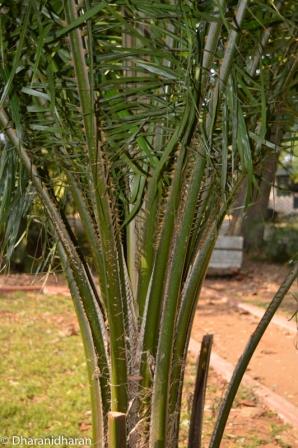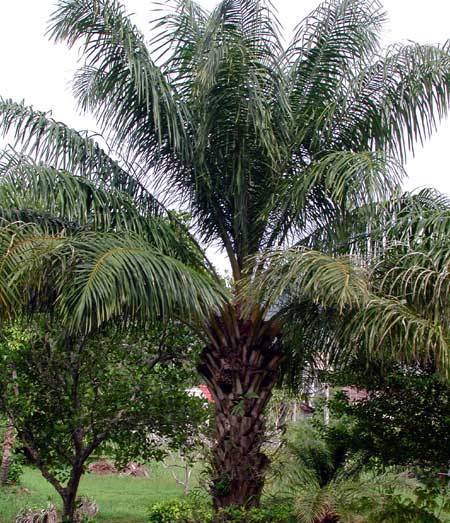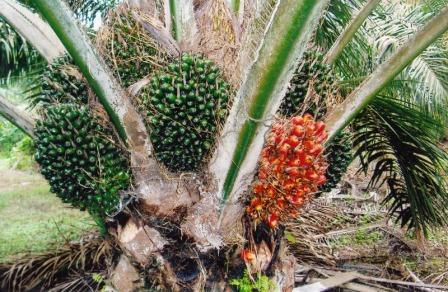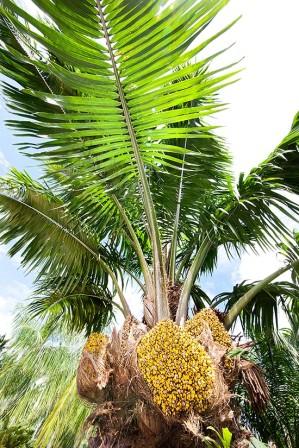Natural Regeneration :
- Naturally regenerates by seeds only.
Artificial Regeneration :
- Propagated by nursery raised seedlings.
Seed collection and Storage :
- Fruits are separated from the bunch.
- Remove the exocarp and mesocarp with knife.
- Dry the seeds on concrete or wooden floors under shade for 2 days and stored for 3-9 months.
Seed Treatment :
- Seeds are soaked in water for 5 days (changing the water daily) and spread out to dry for 24 hours.
Nursery Technique :
- Dried seeds are put in 23 X 13 cm size polythene bags filled with top soil, sand and well decomposed cattle manure in equal proportions and placed for germination. Germination (90-95 %) starts 10-12 days.
- Apply fertilizer mixture containing 15:15:6 of NPK @ 8 g in 5 litres of water for 100 seedlings
Plantation technique :
- Pit size 60 cm3.
- Planting can be done in triangular system with spacing of 9 m x 9 m x 9 m, accommodating 140 palms/ha,
- May-June is the suitable season for planting.
Care & Disease Control :
Mulching:
- Empty bunches, male flowers, coconut husk, sugarcane trash can be used as mulch.
Irrigation :
- Yielding palm of 3 years age and above – minimum of 150 liters/day.
Drip irrigation:
- 5 hrs of irrigation per day using 4 drippers per palm @ 8 litters of water /hr/dripper.
Recommended Harvest :
- First harvest can be done 3.5 to 4 years after planting.
- Harvesting rounds should be made as frequent as possible to avoid over ripening of bunches.
- Harvesting rounds of 10-12 days are generally practiced.
- During rainy season harvesting rounds of 6-7 days are followed.
Yield :
- 25 – 30 tonnes of fresh fruit bunches/ hectare.
Agro Forestory :
- Coffee and cocoa are small trees that can be planted among E. guineensis trees.
Major uses :
Food:
Palm oil is popular in West Africa and Malaysia for cooking. It is now imported by India to meet local shortages in edible oil, being cheaper than many other vegetable oils. In West Africa, palm oil is often added directly to bring richness to soups and sauces. Addition of oil to cereal preparations greatly increases their calorific density, which is particularly advantageous for young children. Palm oil is also used as frying oil in the preparation of snacks such as bean cakes and fried plantain. Its 10% linoleic acid content makes it an excellent source of carotene. This is important in reducing incidence of vitamin A deficiency and the occurrence of nutritional blindness. Oil palm also provides heart-of palm.
Fodder:
Pressed cake is used as cattle feed
Other uses :
Fuel:
It is technically possible to produce from palm oil either carbohydrates for conversion to alcohol or a methanolizable oil as a diesel substitute. In Togo, the pressed fruits are dried and fashioned into cakes for cooking fuel.





